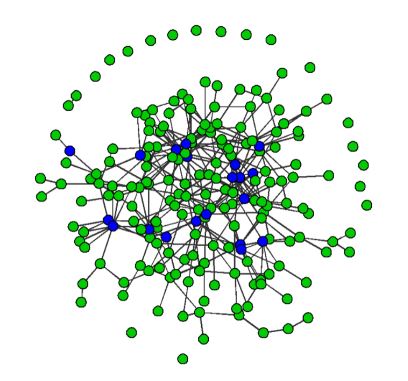Arts and Sciences, College of
Date of this Version
2022
Document Type
Article
Abstract
Building a network using wooden blocks demonstrates that some pieces in a network are more important than others. Removing pieces of a network will change the structure, but removing the pieces that are most connected or more foundational to the network will have more significant impacts on the network. In an ecosystem network, the more connected the network, the more robust it is. Think about ecosystems and food webs as networks with varying degrees of robustness depending upon how many connections and kinds of connections they contain (e.g. if there are “hubs” or “key links” in the chain). In an ecosystem, one organism may rely on another for energy (e.g. predator-prey) whereas others rely upon each other not for a food source, but for notification of oncoming danger. We can model these relationships with arcs. The arrows represent the directionality of energy when the organisms are eaten. This food chain makes up only a tiny part of a network. Networks help us see the bigger picture. At the beginning of the “Jenga” game, the wooden block network model is robust. A robust network means that the network does not change much when we take pieces away; it means the network is not as sensitive to losing nodes/vertices. Typically, in robust networks, removing nodes at random will not change the network as much compared to removing pieces with the most connections (high degree). The different impacts of removing more or less connected (higher- or lower-degree nodes) does not just happen in ecosystem networks. Removing pieces with the most connections can have a big impact in any network (e.g. if you have to close an airport hub -versus a small regional airport- because of weather, it has impacts all over the country).
The student will understand that taking away nodes in a network (e.g. wooden block pieces) sometimes means simply changing what the network looks like and other times can lead to a total collapse of the network (breaking all of the links/ties).
The student will be able to describe how a model (e.g. wooden block tower) gives insights to real world phenomena related to Ecology (e.g. if crickets disappear, what happens to the larger food network?).
The student will engage with NGSS Crosscutting Concept 4. Systems/System Models.


Comments
This activity guide was originally published in the following book: NE STEM 4U. 2022. Network science: Ecology. In Hands-on with NE STEM 4U: For Budding STEMers in Grades 4–8, pp. 143–150. Omaha, NE: University of Nebraska–Omaha.
“These activity guides are supported by the Worlds of Connections SEPA [R25GM129836] at the University of Nebraska-Lincoln, funded by the National Institute of General Medical Sciences of the National Institutes of Health. This content is solely the responsibility of the creators and does not necessarily represent the official views of the National Institutes of Health or the University of Nebraska.”